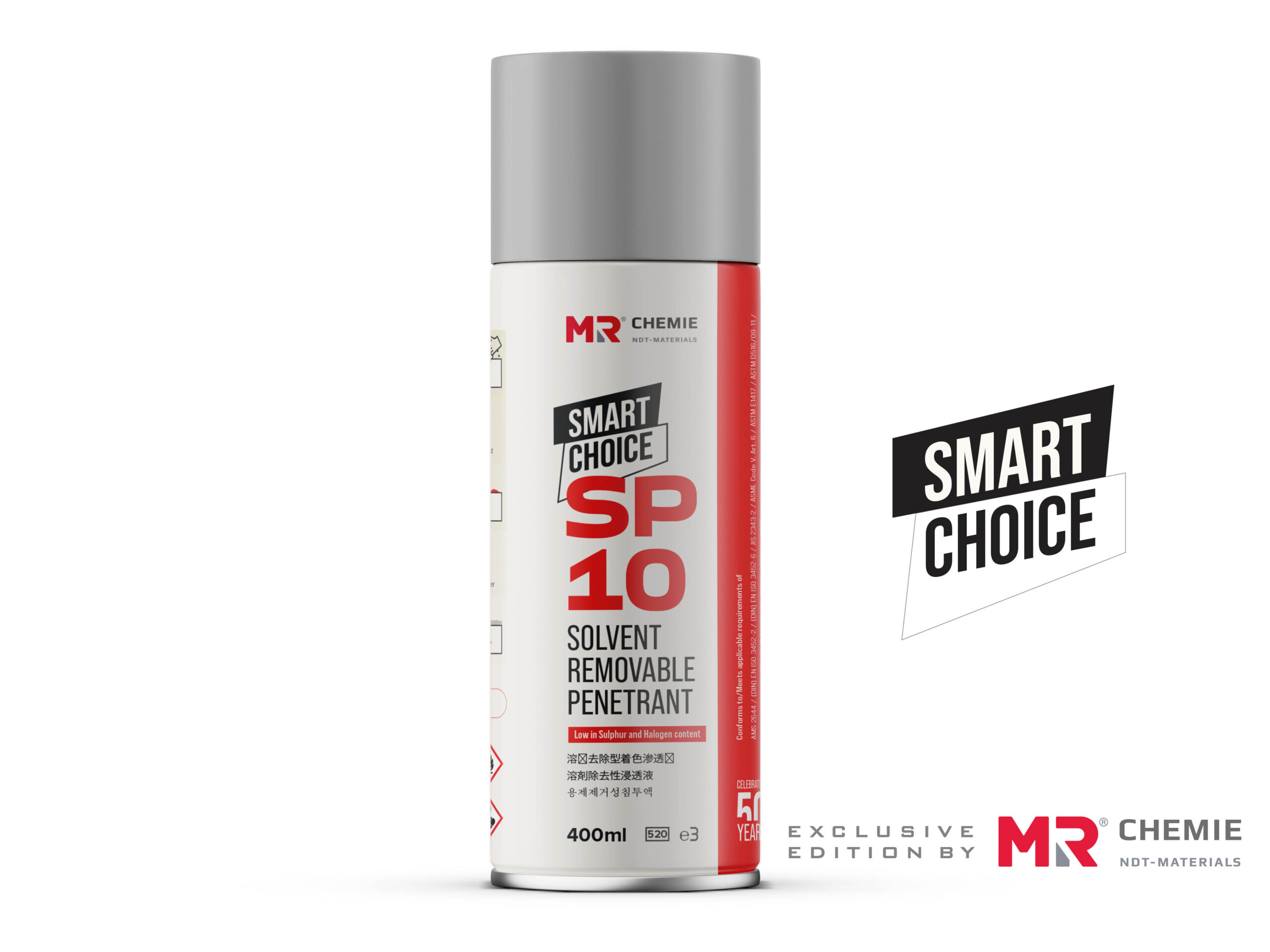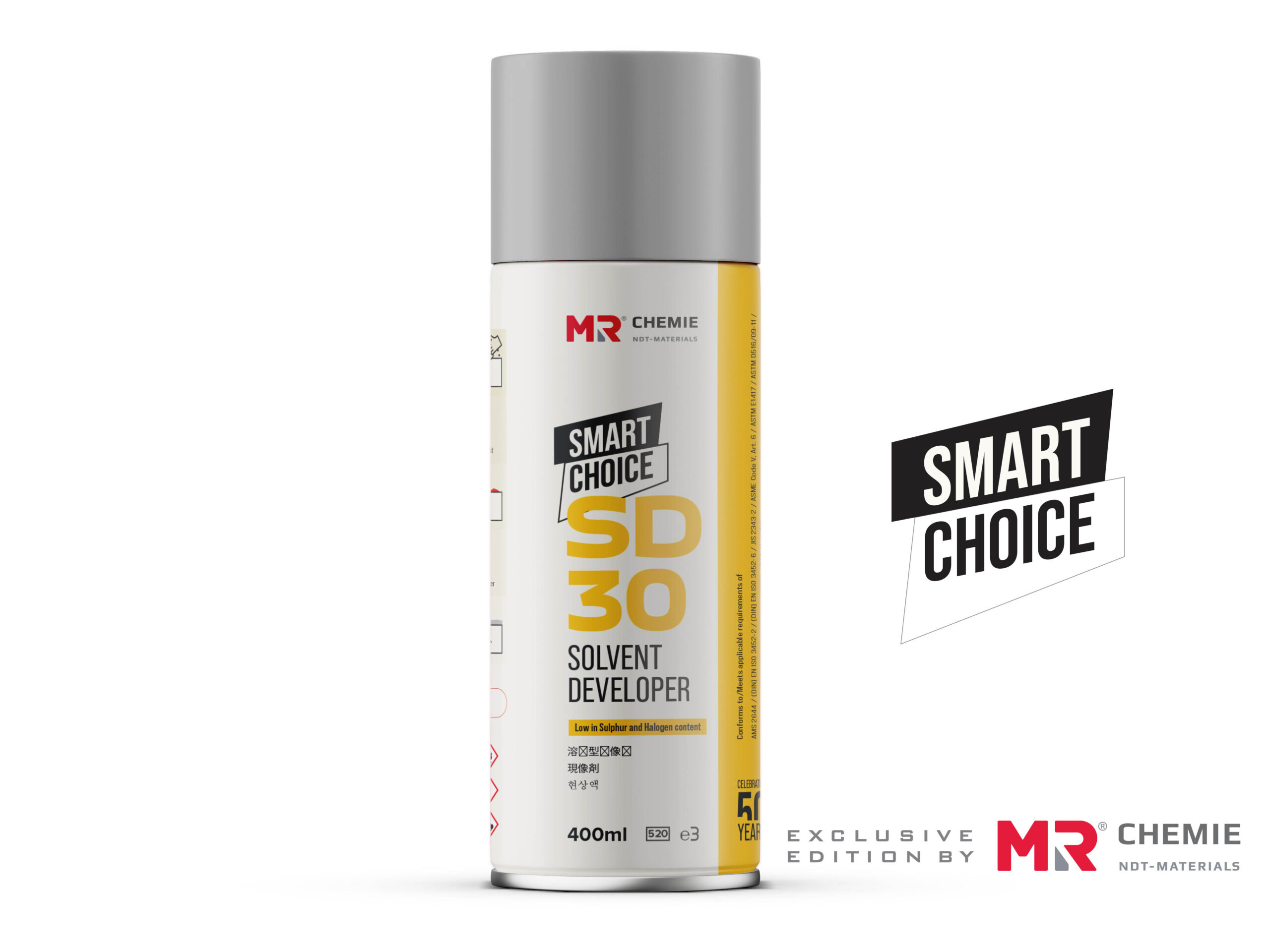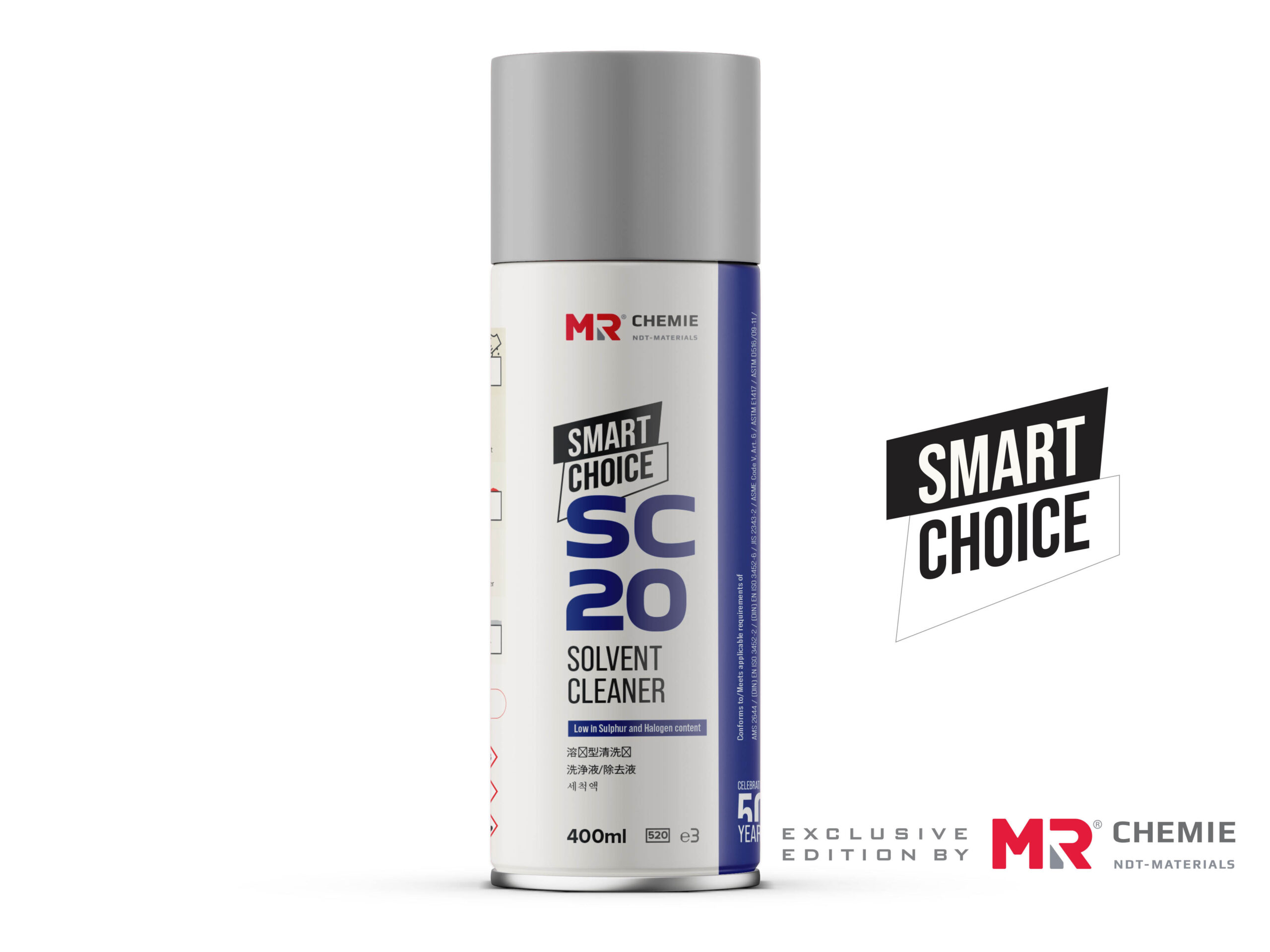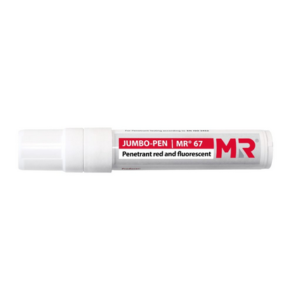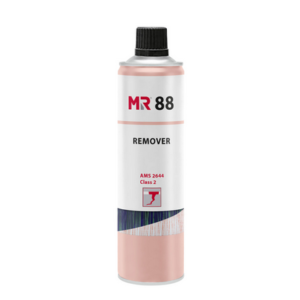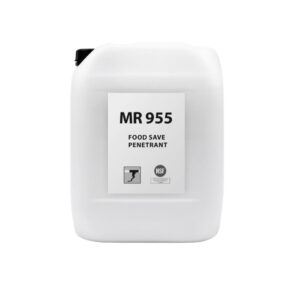MR® SmartChoice SC20, Solvent Cleaner
SMARTCHOICE is an exclusive low-cost edition by MR® Chemie for sale in select channels only.
SMARTCHOICE SC20 is an NDT-approved non-halogenated solvent-based cleaner/remover for pre-cleaning (removes oils, greases and other contaminants) and removing excess surface penetrant from an inspection area before applying developer during liquid penetrant testing. It dries optimally without leaving any residue on the surface.
| SKU | Pack Size | Case Size |
| 2511-0083 | Aerosol 280ml | 20 |
| 2511-0137 | Aerosol 400ml | 10 |
| 2511-0142 | Bulk 1L | 6 |
| 2511-0089 | Bulk 5L | – |
Additional information
| Properties | Appearance – clear volatile liquid |
|---|---|
| Approvals | ASME Code V, Art. 6 |
| Family Testing | Penetrant – SP10, WP15 |
| Recommended Usage | NDT Method – Dye Penetrant Testing |
| Reference Test Blocks | Reference test block type 1 (Ni-Cr panel) |
Features
- Alcohol based
- Non halogenated cleaner
- Residue free
- Optimal dry time
- Does not overclean
- Suitable for all metals (suitability for plastics & ceramics requires testing prior to use)
How it Works
There are different types of cleaners used in NDT, such as solvent cleaners, emulsion cleaners, and aqueous cleaners. Solvent cleaners are typically used for removing oily or greasy contaminants, while emulsion cleaners are used for removing both oily and non-oily contaminants. Aqueous cleaners are water-based and are typically used for cleaning sensitive materials that cannot tolerate solvent cleaners.
Pre-Cleaners in NDT are used to remove contaminants such as oil, grease, dirt, and other foreign materials from the surface of the material being inspected. They work by breaking down the chemical bonds between the contaminants and the surface of the material, allowing them to be easily removed.
Intermediate Cleaners in NDT are used to remove the excess penetrant from the surface while retaining the penetrant inside the discontinuity. This is achieved by ensuring the special solvent mixture; when applied on the substrate cleans the excess penetrant on the surface and optimally dries without cleaning the penetrant seeped in the discontinuity.
GHS
Aerosol UN Model Regulation - UN 1950 AEROSOLS, 2.1FAQ
Q: What is a cleaner in NDT?
A: A cleaner in NDT (non-destructive testing) is a type of cleaning solution used to prepare the surface of a material for inspection. It is used to remove contaminants such as oil, grease, dirt, and other surface impurities that could interfere with the inspection process.
Q: What are the types of cleaners used in NDT?
A: There are various types of cleaners used in NDT, including solvent-based cleaners, aqueous cleaners, and emulsifiers. Solvent-based cleaners are often used for removing heavy oils and greases, while aqueous cleaners are used for water-soluble contaminants. Emulsifiers are used for both types of contaminants.
Q. What is the difference between Pre-Cleaning and Intermediate Cleaner?
A. A pre-cleaner is based on a mixture of highly-volatile solvents for en effective cleaning of surface from heavy contaminants whereas an intermediate cleaner is based on a mixture of lower-volative solvents which effectively removes only the penetrant during the process.
Q. Can the cleaners be interchanged?
A. MR® Cleaners can easily be interchanged depending on the application. However, care has to be taken to use only the solvent-based cleaners from MR Chemie as they are engineered to work in the penetrant system. General Cleaners have no guarantee to work effectively and may hamper the indications.
Q: What are the safety precautions when using a cleaner in NDT?
A: When using a cleaner in NDT, workers should follow safety precautions to prevent skin or eye contact, inhalation, and ingestion. They should wear protective gear, such as gloves, safety glasses, and a mask, as well as use the cleaner in a well-ventilated area. They should also follow the manufacturer's instructions for the proper use and disposal of the cleaner.
Q: What are the benefits of using a cleaner in NDT?
A: The use of a cleaner in NDT provides several benefits, including improved inspection accuracy and reduced false indications due to surface contaminants. It also reduces the background after the application of the developer to product a low-noise and high-clarity indication.
